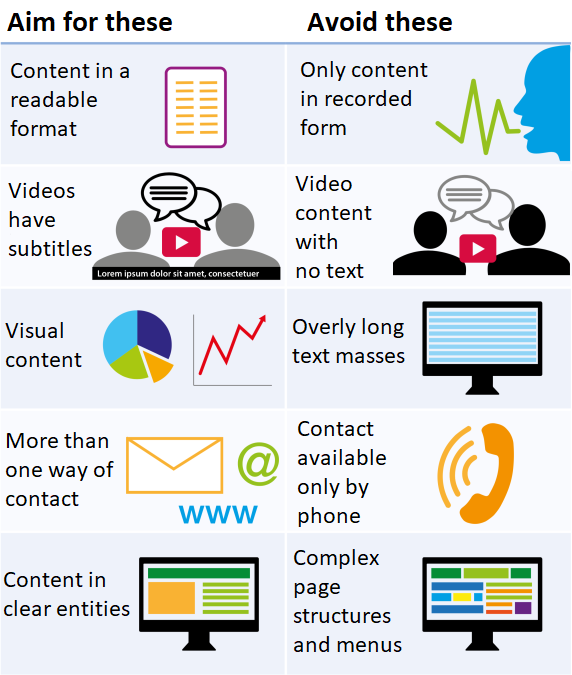Hearing-related limitations

Taking hearing impairments into consideration
Deaf and hearing impaired people must be taken into consideration in content production, especially when it comes to contents containing audio. This means videos and sound files in particular. If the page presents pre-recorded content, an alternative method must be made available. Such methods include but are not limited to sign language interpreting, video captions or a text account of the video content. The easiest methods are adding a text account to the page and video captions.
The information contents of digital services must meet the accessibility requirements when they are available to the users of the service. However, if time-sensitive media is published via a public digital service, the service provider must ensure that the pre-recorded time-sensitive media meets the accessibility requirements within 14 days of the initial publishing of the media recording or its re-release.
Make sure that an audio signal is not the only method of conveying messages to the user. For deaf and hearing impaired people, audio signals are impossible to observe, and even most users without hearing issues keep the computer speakers muted, rendering audio signals ineffective.
If the contents are presented as a recording, such as an interview, make sure that there are no disruptive sounds in the background of the speech.
Check at least the following:
- Any videos have captions or at least a readable text account of the content.
- No contents are presented merely as audio or video files.
- The contents are divided into clear wholes.
- The presentation of the contents utilises visual means.
- If necessary, the user is able to contact you through means other than the phone.
